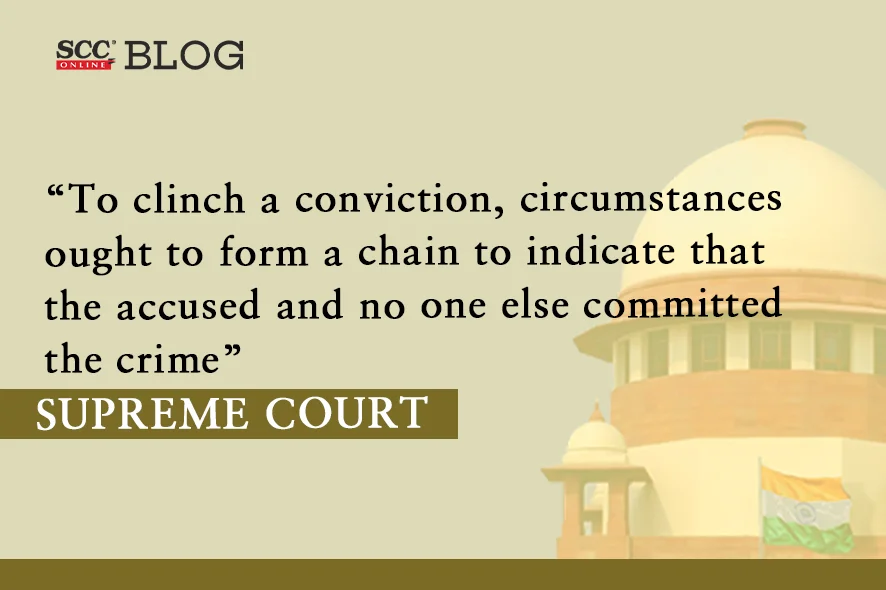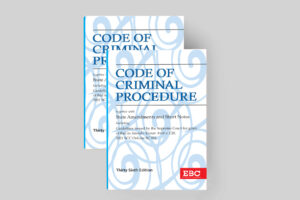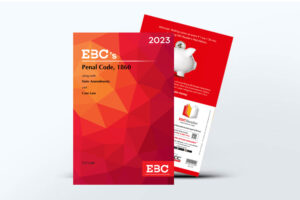Supreme Court: In an appeal assailing judgment and order passed by Uttarakhand High Court on 26-07-2012 rejecting application seeking leave to appeal under Section 378(3) of Criminal Procedure Code (‘CrPC’) against judgment and order passed by Trial Court on 13-12-2011, the Division Bench of B.V. Nagarathna and Manoj Misra*, JJ. Dismissed the same while upholding the findings of Trial Court with evidence favouring benefit of doubt for the accused persons.
Background
The matter relates to a person killed while he was travelling with his group on scooter. It was alleged that on their way, they noticed three policemen standing on the road who flashed a torch light on them, due to which, the riders lost control of their scooters, skidded and fell. One of the policemen exhorted to shoot to kill, shots fired hit the deceased who collapsed on the spot, while the other two persons managed to escape to the village. Police and villagers arrived at the crime scene and the deceased was rushed to the hospital who had already succumbed to his injuries on the way and FIR was lodged.
Another crime was lodged on 25-06-1987 alleging robbery on 26-05-1987 wherein a person had died, giving another version to the story in the instant matter. Investigation of the two cases was assigned to Crime Branch, Crime Investigation Department (‘CB-CID’) and then to Central Bureau of Investigation (‘CBI’). A case was registered and chargesheet was submitted by the CBI and the Additional Sessions Judge charged three of the respondents in the instant matter for committing offence punishable under Section 302 read with Section 32 of Penal Code, 1860 (‘IPC’). During trial, incriminating circumstances were put to the accused to record their statement who denied the same and claimed of being falsely implicated and made scapegoat.
The Trial Court and High Court pointed that the prosecution case rested on three eyewitnesses, two of whom could not identify the policemen and the third one was not found reliable, and the medical evidence that the gunshot injuries caused by a rifle bullet but a .12 bore weapon which was not recovered from any of the accused persons.
Court’s Analysis
The Court explained that “in an appeal against acquittal, the power of the appellate court to reappreciate evidence and come to its own conclusion is not circumscribed by any limitation. But it is equally settled that the appellate court must not interfere with an order of acquittal merely because a contrary view is permissible, particularly, where the view taken by the trial court is a plausible view based on proper appreciation of evidence and is not vitiated by ignorance/misreading of relevant evidence on record.”
The Court perused ocular evidence of deceased’s companions and the Trial Court’s version of evidence of the third eyewitness for being unreliable and unworthy creating a doubt in the Court’s mind for remaining silent for a week and coming up with 3 identically worded affidavits prepared by a lawyer on stamp papers, consecutively numbered, bought from the same vendor. By the time this witness came, the case had been transferred to CB-CID from local police, which the Court found justified to be discarded by the Trial Court. The Court further commented regarding bullets causing death that “even if empties of rifle cartridges relatable to service rifles issued to the accused were found at the spot, culpability of the accused persons in causing death of the deceased is not inferable.”
On accused persons remaining at the crime scene by the time villagers arrived, the Court highlighted that if they were really involved in the said crime, they could have been identified by the two witnesses, and the continued presence of the accused at the spot went in their favour as a conduct that belies a guilty mind. The Court also pointed towards the empty cartridges which were found at the crime scene but not fired from the rifles issued to the accused, indicating the presence of some other rifles which the prosecution evidence did not break into. It further said that “if the accused were to use their rifle to fire shots, why would they use a country made pistol to inflict injury to the deceased.”
The Court further stated that the accused persons patrolling on the date of incident was not conclusive to turn the tables to the accused as they might have arrived late at the spot when the incident might have already taken place and fired shots from service rifles to chase away the miscreants. The Court observed that “to clinch a conviction on the basis of circumstances, the circumstances ought to have formed a chain so far complete as to indicate that in all human probability it was the persons facing trial and no one else who committed the crime.”
The Trial Court in the Court’s opinion had no option but to extend benefit of doubt to the accused when the chain of evidence was incomplete. The Court did not find the instant case fit for interference and dismissed the same.
[Central Bureau of Investigation v. Shyam Bihari, 2023 SCC OnLine SC 844, decided on 17-07-2023]
Judgment by: Justice Manoj Misra
Know Thy Judge | Supreme Court of India: Justice Manoj Misra
Advocates who appeared in this case :
For Appellants: Additional Solicitor General Vikramjit Banerjee, Advocate Sanjay Kumar Tyagi, Advocate Rajan Kumar Chourasia, Advocate Shubhendu Anand, Advocate Tathagat Sharma, Advocate Nring Chamwibo Zeliang, Advocate on Record Arvind Kumar Sharma;
For Respondents: Advocate on Record Praveen Chaturvedi, Advocate Anil K. Sharma.








